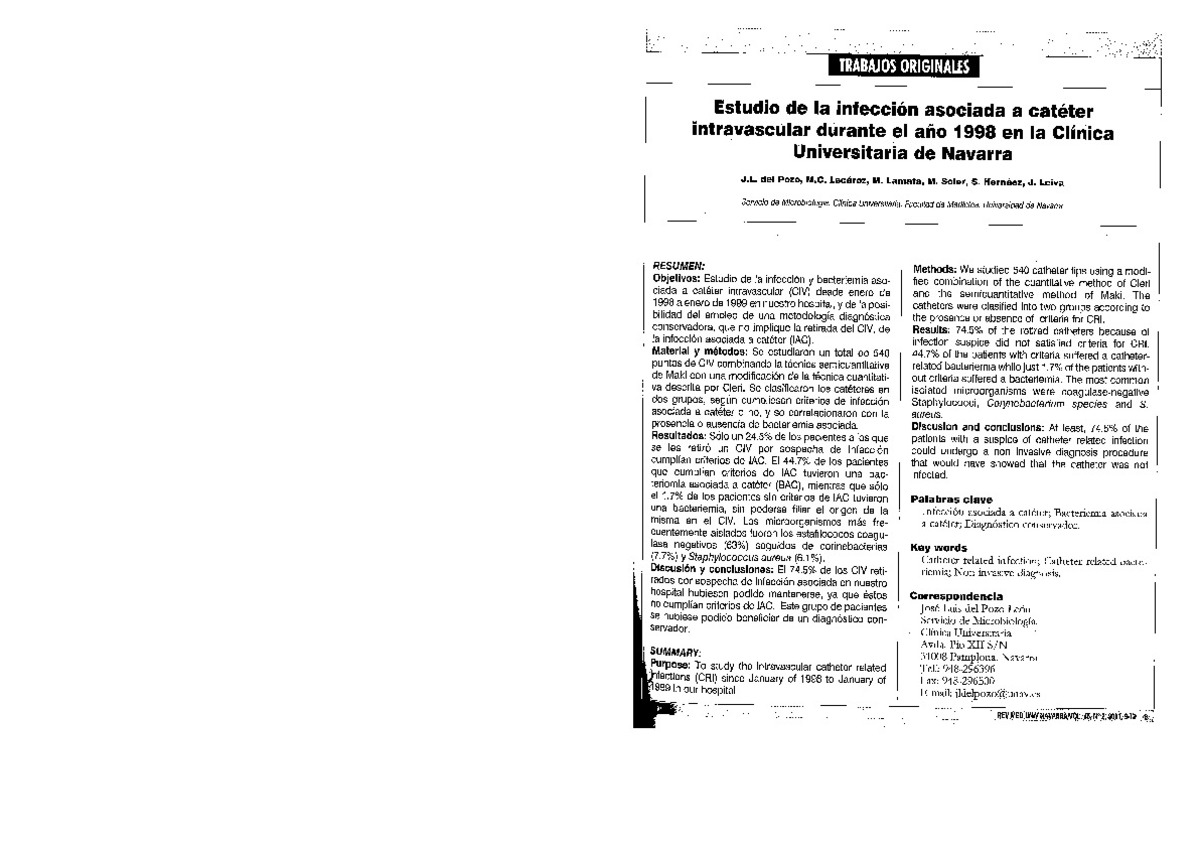Estudio de la infección asociada a catéter intravascular durante el año 1998 en la Clínica Universitaria de Navarra at the University Clinic of Navarra
Keywords:
Infección asociada a catéter
Bacteriemia asociada a catéter
Diagnóstico conservador
Publisher:
Universidad de Navarra
Citation:
Del Pozo JL, Lecaroz MC, Lamata M, Soler M, Hernaez S, Leiva J. Estudio de la infección asociada a catéter intravascular durante el año 1998 en la Clínica Universitaria de Navarra. Rev Med Univ Navarra 2001 Apr-Jun;45(2):9-13.
Statistics and impact
0 citas en

0 citas en

Items in Dadun are protected by copyright, with all rights reserved, unless otherwise indicated.







